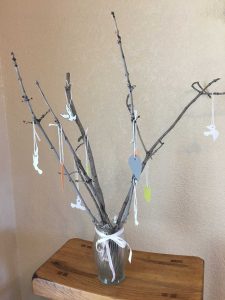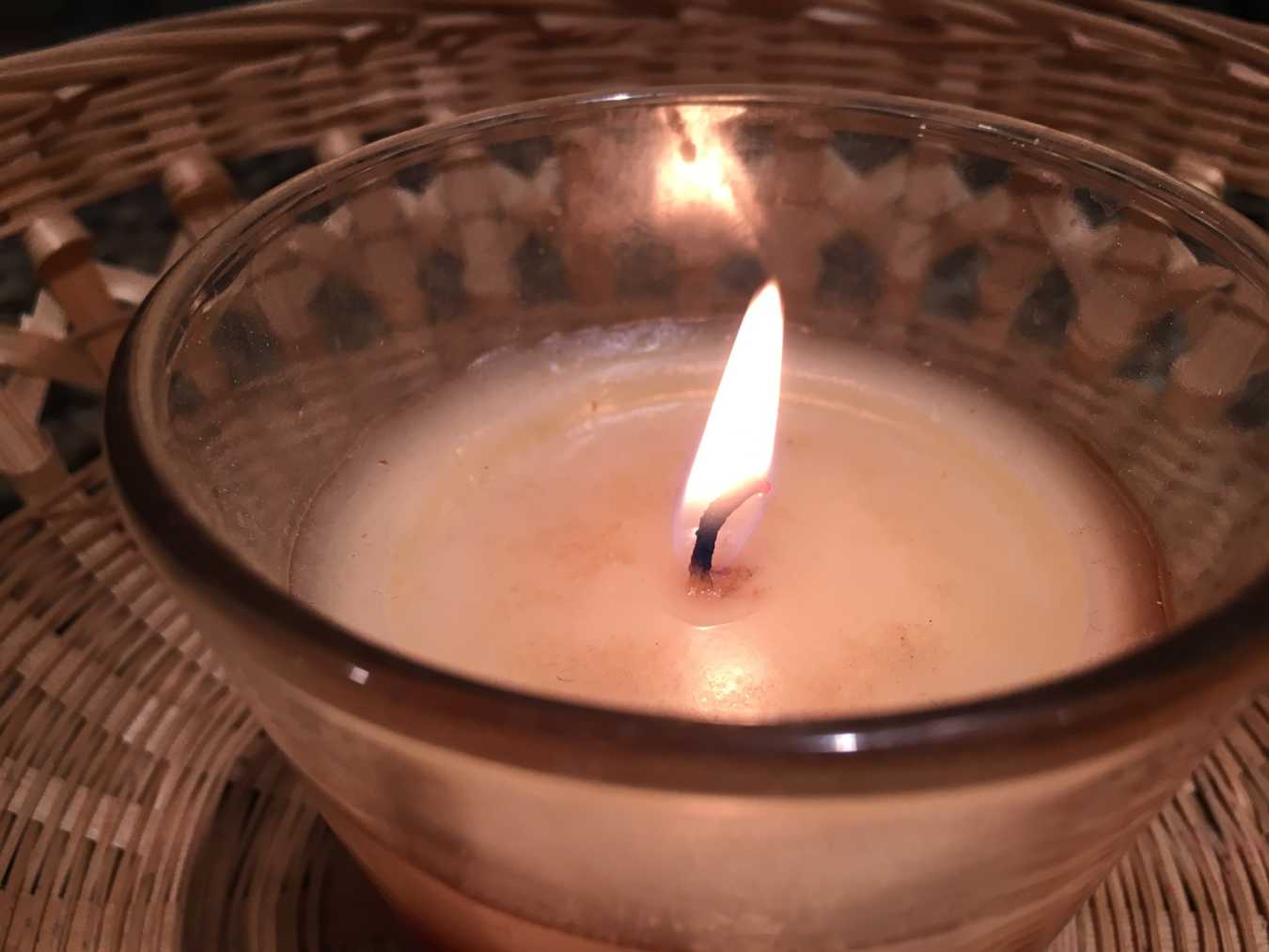When I was younger, I knew almost nothing about All Saints’ Day other than its place on the calendar the day after Halloween. I knew that Halloween was a shortened form of All Hallows’ Eve, or All Saints’ Eve, and I knew that All Saints’ Day had something to do with people who had died, but I wasn’t exactly sure what.
The more I learn about the liturgical calendar, the more convinced I become that reclaiming the observance of these special days helps us to move and flow with the rhythm of the church year, the church around the world, and the historical church. By reconnecting to these days and movements, we begin to find our lives being shaped by rhythms and patterns that transform us. We find that each day has meaning and that even time can be made holy by God.
All Saints’ Day is an opportunity not only to remember those we love who have died, but also to remember and imagine our place in the wide, expansive family tree of our our faith. The saints are not only those who have gone before and paved the way, but they are also us. We are living saints – albeit very imperfect saints – who are charged with planting seeds, forming roots, and stretching out our branches so that all people may find the opportunity to rest and find a home in God.
This lesson I am providing can be used both in church and in the home. I hope that you will find this lesson easily adaptable for usage as a childrens sermon, a Sunday School lesson, or an activity at home with your own children. Keep it simple. Involve the senses. And invite the children around you to imagine and explore what it means to be a part of God’s wide family tree.
Making a Faith Family Tree: Teaching All Saints’ Day to Children
Supplies:
Bible
Some long, thin sticks
Pieces of paper (if you want, you could cut them into the shape of birds and leaves)
Pencils, crayons, or markers
Vase or container to place the sticks into
White ribbon (or any other color)
Hole punch
String
Before beginning this lesson, make sure you’ve got all your supplies gathered, unless you plan to gather the sticks with the kids you are teaching. I had already cut the papers out into the shapes I wanted, and I punched a hole in each shape. Through each hole, I pre-tied the string so that they would be ready to hang up right away. Depending on the amount of time you have and the ages of the kids you are teaching, you could invite them to cut out the shapes, or tie the strings on, too.
If you are doing this lesson at home or as a Sunday School lesson, invite the children to come outside with you to look for long sticks you can use to put together your faith family tree. Arrange the sticks in a vase or tall mason jar. Spread out the paper leaves and birds in front of the children. As you teach them about All Saints’ Day, you might say something like this:
Do you know what a family tree is? Have you ever made one? A family tree helps us to look back through the years and see all of the members of our family. Family trees can even go all the way back before we were born to generations of people in our families we never got the chance to meet. Making a family tree can be a really helpful thing to do when we want to learn more about our history and the history of our families.
Family trees are tricky, though, because sometimes we don’t know very much about the people in our extended families. Sometimes we might not know anything more than who helped to raise us – like our moms and dads, our grandparents, or any of the other important adults in our families. If we have siblings, we could add those to our family trees, too.
Did you know you have a faith family? You do. It’s true! Our faith family tree connects us to people all around the world, and even to people who have already died. Did you know we are connected to people like Abraham, Moses, Miriam, and Sarah? We are connected to David and Samuel, Ruth and Naomi. (If you are working with older children, this could be a good time to turn to Hebrews 11. You can summarize these verses, or invite the kids to read them with you.) We are connected to the Apostle Paul, Lydia, and the disciples. Our faith family tree goes all the way back to the Bible, and it is still growing and stretching out its branches and inviting more people to come in and find some shade.
That means you and I are family – even if we aren’t related! That means everyone in this church…is part of your family. Everyone in the church up the street…part of your family. Our faith family tree is so big that we can’t even see everyone who is a part of it. But all of us are connected because of God, and because of Christ. Christ is who holds us all together.
If you haven’t already, arrange the sticks in your vase or jar. At this point, tie a white ribbon (or a ribbon of any color) around the jar. I selected white because it is the liturgical color for All Saints’ Day.
We are all held together by Christ. He’s the one who keeps the big, expanding tree all together. I think that’s pretty amazing.
November 1 is a special day in the church calendar called All Saints’ Day. All Saints’ Day is a day when we think about our big, wide faith family tree. We remember all of the people who have gone before us, and we specifically think about all of the people who have taught us about faith and who have shown us good examples to follow. I’ve brought some paper leaves and some paper birds today. I’ve placed them in front of each of you along with something to write with. For the birds, I want you to think about someone who taught you about faith who is no longer living. If you would like, you may write names on the birds and hang them on the tree.
This might be a challenging exercise. Don’t force it or rush it. If a child cannot think of anyone, that’s okay. I pre-punched a hole in each bird and leaf and tied strings through the holes so the kids can hang them up after they’ve finished writing.
For the birds, I want you to think about people you know are still living and who teach you about faith. If you would like, you may write names on the leaves and hang them on the trees.
Give some time for kids to do this. You may do some as well.I think it’s pretty special that we have this time to think about all of the important people in our faith family tree. We’ve used birds and leaves…but we aren’t done yet. I have a surprise for you. Did you know you are on this tree, too? Each and every one of you is part of this big, faith family tree. It doesn’t matter how old you are or how young you are. It doesn’t matter if you’ve known about Jesus a long time, or just a little while. You are part of this tree…and you help teach me about Jesus. Each and every one of you does that.
Let’s each take a leaf and put our own names on them and hang them on the tree.
After the kids have placed their names on the tree, move the tree to a focal point in the room.

This tree is beautiful. It’s big, and it’s got so many important names on it. In the book of Hebrews, we learn that we are “surrounded by so great a cloud of witnesses” (Hebrews 12:1). That means there are so many people who have gone before us and so many people all around us who are part of our faith family tree and can help us to learn and grow. They can encourage us when we’re discouraged, just like so many of the people on the tree we’ve made have done for us. What’s really awesome to me is that our faith family tree is even bigger than the one we’ve made together. We may not know everyone’s names, but God does. Today, let’s spend some time remembering all of those important people in our lives, and let’s remember that God has given us a place in the big, expanding, faith family tree, too.
Invite the children to pray with you. Your prayer could be something like: Dear Jesus, thank you for all the names on our faith family tree. We don’t know all the names of the people in your family, but you do. Help us to keep growing and to keep remembering. We pray this in your name, Amen.
Do you have traditions for All Saints’ Day? I’d love to hear about them. If you end up using this lesson, I’d love to hear how it goes!

